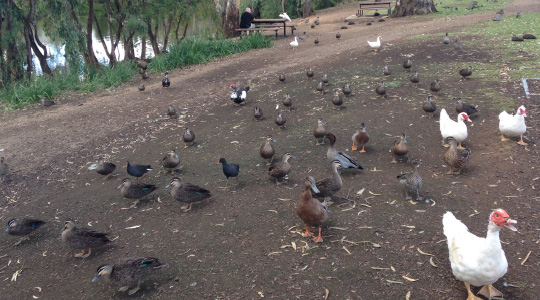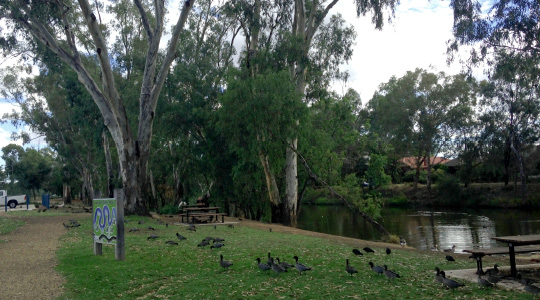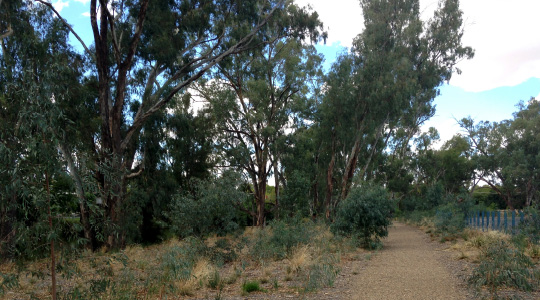Meandering through the Victory Memorial Gardens and Civic Centre precinct in the centre of Wagga, the Wollundry Lagoon is the perfect spot to relax or enjoy a pleasant stroll amongst native vegetation.
Aboriginal Importance
The Wollundry Lagoon is important to the Wiradjuri/Wiradyuri people for its spiritual, historical, social and aesthetic values. It is associated with the Dreaming story of the Wawi, a reptile-like spirit which resided in, and protected the Lagoon.
Wollundry is an Anglicised word derived from the Wiradjuri language. 'Walang' means 'stone' or 'hard' and 'duray', means 'having' or 'place of'. Thus Wollundry (Walangduray) means 'stone-having' or 'place of stones'. The name is probably a reference to a granite rock bar (outcropping rocks) in the river below the present day St John's Church or to the granite on which the church stands.
The surrounding sandhills have been used by Aboriginal groups for camping. At the time of European settlement, families camped near the lagoon and surrounding areas. Major gatherings attended by 400-500 Aboriginal people or 'grand corroborees' occurred in 1842 and 1843.
Traditional Wiradjuri food and medicine collecting and cultural activities were practised at least until the 1870s, including the use of fish balks, or weirs, for managing supplies of fish.
Wollundry Lagoon is connected to the Victory Memorial Gardens and the Civic Precinct by walking tracks that, for the most part, wind along the edge of the lagoon.

Wollundry Lagoon is home to ducks, geese and water hens.

The perfect spot to relax next to the water.

The 1km walking track wraps around a section of the lagoon and is a relatively flat walk, with the majority of it being sealed.
